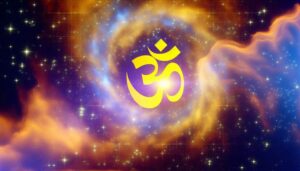What Is the True Meaning of the Yin Yang Symbol?
The Yin and Yang symbol, originating from ancient Chinese philosophy, embodies the principle of dualism and the harmonious interplay of opposing forces. Found in classical texts like the 'I Ching', the symbol portrays a cyclical and dynamic balance where black (Yin) and white (Yang) sections intersect, illustrating interdependence.
Yin represents aspects like cold and rest, while Yang signifies activity and heat. This duality extends to various natural paired elements, emphasizing equilibrium.
The concept deeply influences traditional medicine, psychology, and daily life practices by promoting balance and holistic well-being. Exploring this further reveals its profound impact on diverse fields.
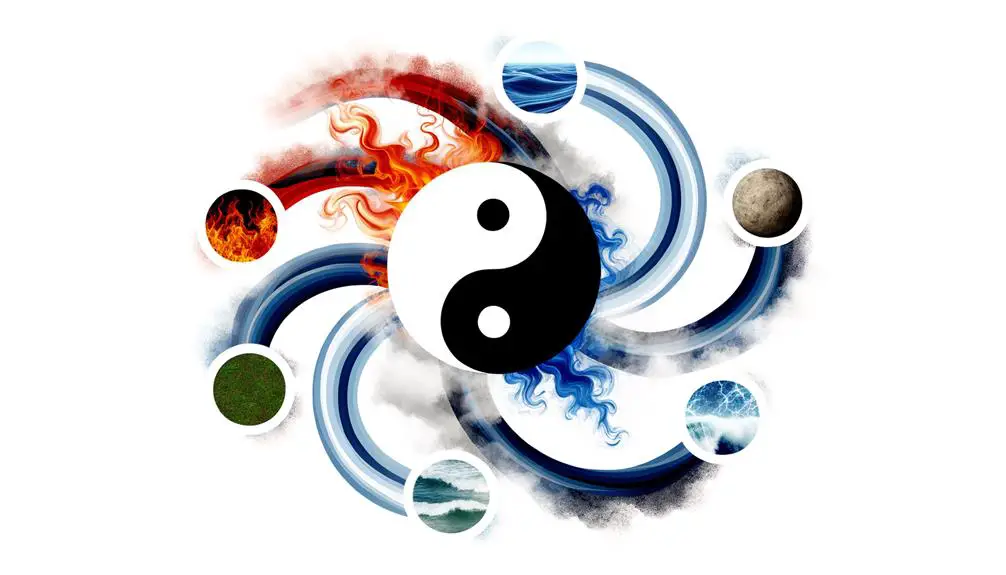
Key Takeaways
- Yin and Yang symbolize interdependent, contrasting forces that create harmony and balance.
- The symbol's circular form signifies wholeness and the cyclical nature of life.
- Black and white sections illustrate the duality and interrelationship of opposites.
- The S-shaped line represents dynamic interaction and transformation between Yin and Yang.
- Each force contains the essence of the other, emphasizing interconnectedness and continuous interaction.
Origins of Yin and Yang
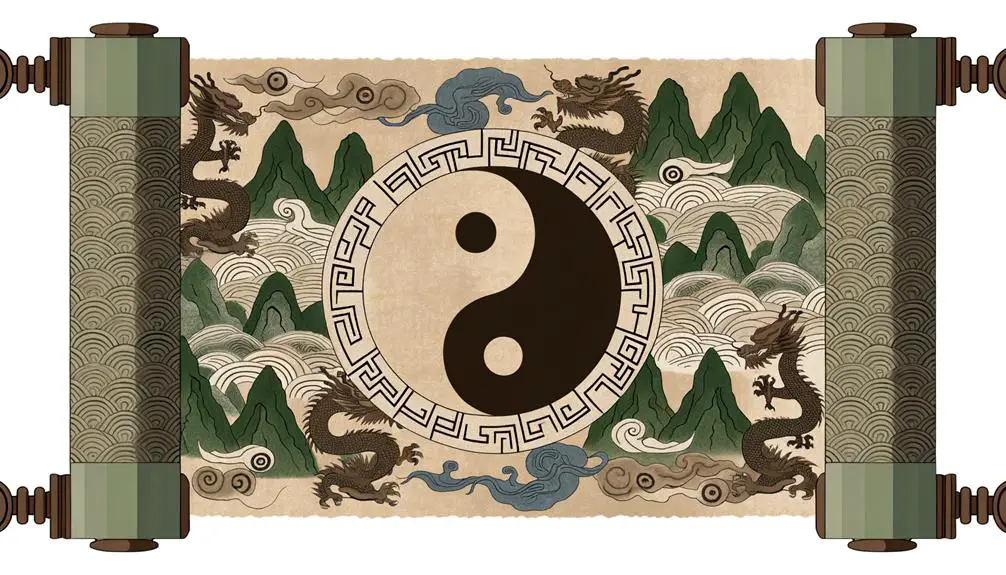
Originating from ancient Chinese philosophy, the concept of Yin and Yang can be traced back to the earliest periods of Chinese civilization, reflecting foundational principles in the study of natural phenomena and cosmology.
Historical records suggest that as early as the Zhou Dynasty (1046–256 BCE), Yin and Yang were employed to explain cyclical changes in nature, such as the alternation of day and night or the shifting seasons.
These dualistic forces embody a dynamic interplay evident in various aspects of life and the universe.
The concept was extensively documented in classical texts like the 'I Ching' (Book of Changes), which utilized Yin and Yang to interpret the balance and transformation inherent in the cosmos.
This historical context underscores their enduring significance in Chinese thought.
Philosophical Foundations
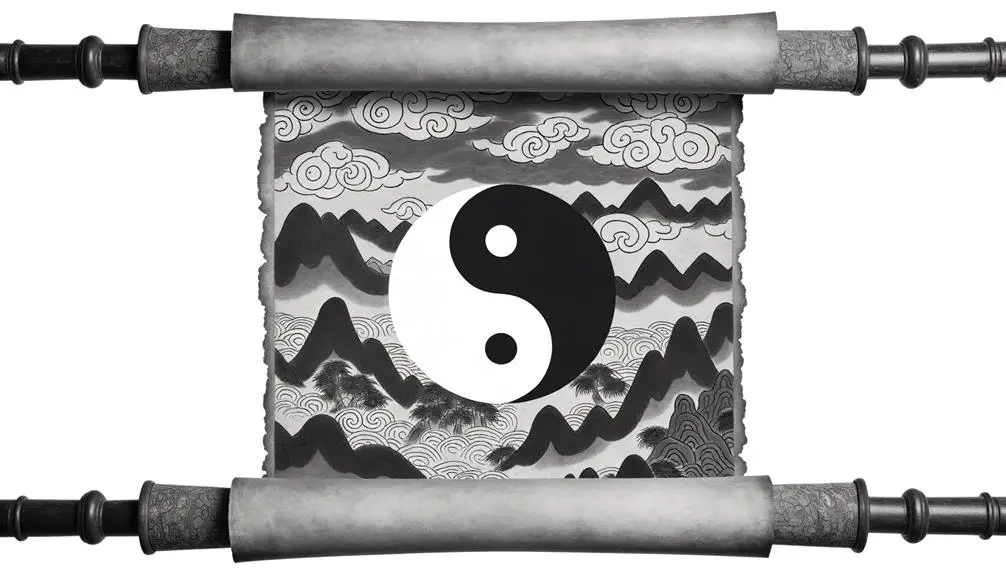
Central to Chinese metaphysical thought, the philosophical foundations of Yin and Yang are rooted in the principles of dualism and the harmonious interplay of opposites. Yin and Yang represent fundamental forces that are interdependent yet contrasting, encompassing all aspects of life and the universe.
This dualism is not a conflict but a symbiotic relationship, suggesting that balance arises from the dynamic tension between these forces. Philosophers like Laozi and Confucius have explored this duality, emphasizing that neither aspect can exist in isolation, and their equilibrium is essential for natural order.
The concept extends beyond physical phenomena to encompass moral, social, and cosmic dimensions, illustrating the intrinsic interconnectedness and fluidity of existence.
Symbolism and Design
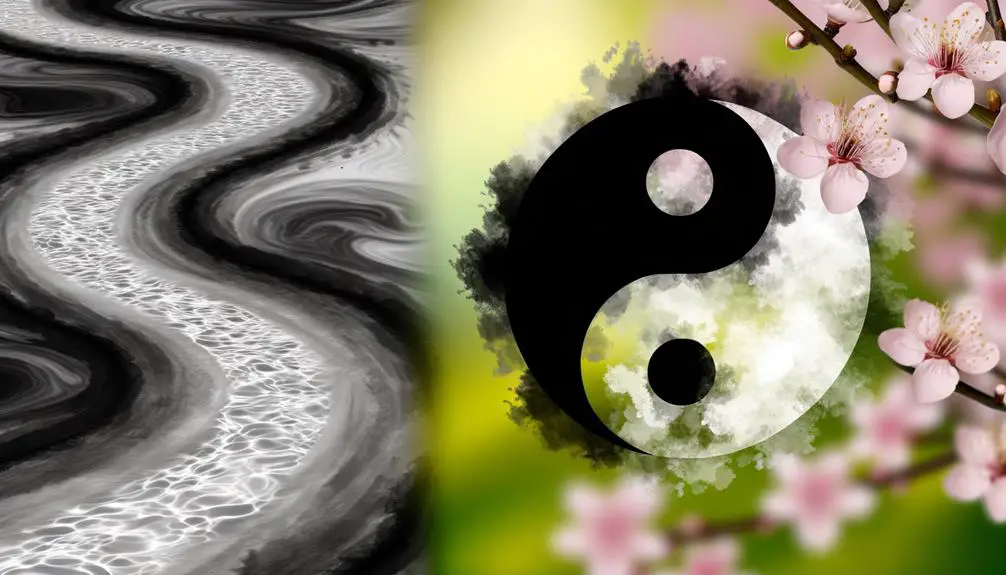
Building on the philosophical foundations of dualism and harmony, the symbolism and design of the Yin and Yang symbol serve as a visual representation of these profound principles.
The circular form embodies the idea of wholeness and cyclical nature, while the contrasting black and white sections illustrate the interdependence of opposites. Each half contains a dot of the opposite color, symbolizing the presence of Yin within Yang and vice versa, highlighting the interconnectedness and balance inherent in the universe.
The S-shaped line dividing the two halves emphasizes fluidity and the dynamic interaction between forces. This design encapsulates the essence of balance and transformation, offering a nuanced understanding of how seemingly contrary forces are deeply interconnected and interdependent.
Duality in Nature

In what ways does the natural world exemplify duality, and how does this reflect the principles embodied by the Yin and Yang symbol?
The natural world is replete with examples of duality: day and night, life and death, and growth and decay. These dichotomies illustrate the perpetual balance and cyclical nature of existence.
The Yin and Yang symbol encapsulates this duality through its depiction of opposing yet complementary forces. Yin, often associated with darkness, femininity, and passivity, contrasts with Yang, linked to light, masculinity, and activity.
This dualistic framework is not merely about opposition but about a harmonious balance that ensures the continuity of the natural order. Thus, the symbol serves as a profound representation of nature's intrinsic dualities and their interdependent equilibrium.
Interconnected Opposites
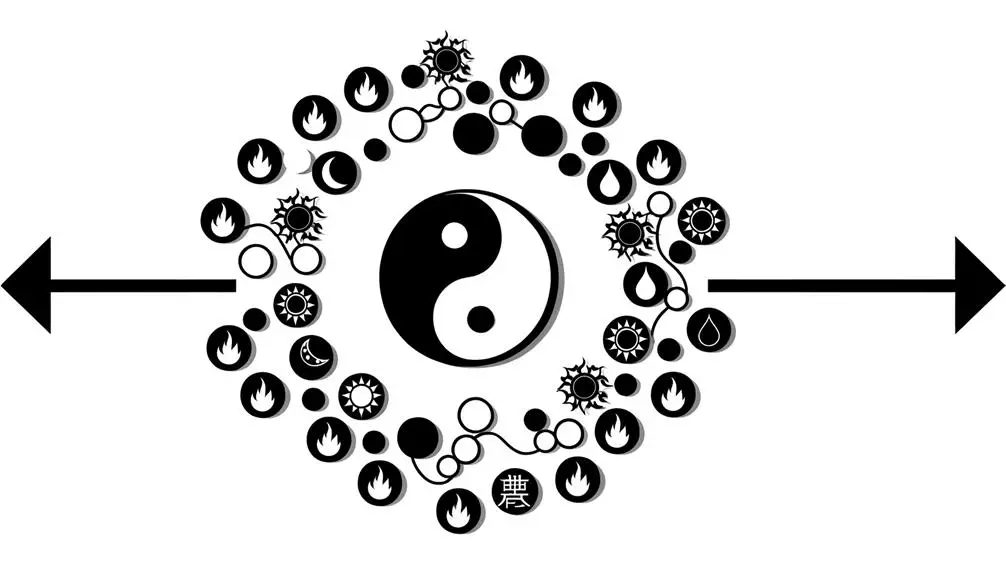
The concept of interconnected opposites within the Yin and Yang symbol illustrates how seemingly contradictory forces are interdependent and dynamically balance each other to create a cohesive whole. This duality is foundational in understanding the following aspects:
- Mutual Existence: Each opposite exists only in relation to the other, such as light and dark.
- Dynamic Equilibrium: The balance between Yin and Yang is not static but constantly in flux.
- Complementarity: Opposites complement and enhance each other, contributing to a greater unity.
- Transformation: Each force contains a seed of the other, signifying potential for change and transformation.
These elements underscore the profound interconnectedness and continuous interaction that define the Yin and Yang paradigm.
Cultural Significance

Rooted deeply in Eastern philosophies and traditions, the Yin and Yang symbol holds profound cultural significance across various aspects of life and belief systems. It permeates Chinese cosmology, Taoist and Confucian doctrines, and influences art, architecture, and social practices. The symbol epitomizes balance and duality, underscoring its relevance in understanding the universe's harmonious nature.
| Aspect | Influence of Yin and Yang |
|---|---|
| Cosmology | Symbolizes universal balance |
| Philosophy | Core in Taoist/Confucian thought |
| Art | Inspires aesthetic harmony |
| Social Practices | Guides ethical conduct |
Its principles are integrated into daily life, serving as a guide for achieving equilibrium and fostering a deeper connection with the natural world. This cultural embedment underscores its timeless relevance and enduring impact.
Yin and Yang in Medicine

In the field of medicine, the principles of Yin and Yang are foundational to Traditional Chinese Medicine (TCM), which emphasizes balancing the body's energies to achieve peak health.
This holistic approach contrasts with Western medical practices by focusing on the interconnectedness of bodily systems and the maintenance of equilibrium. Consequently, TCM therapies often incorporate practices such as acupuncture and herbal medicine to harmonize the dualistic forces within the body.
Balancing Body's Energies
Balancing the body's energies through the principles of Yin and Yang is a cornerstone of traditional Chinese medicine, emphasizing the dynamic equilibrium necessary for best health. This approach asserts that health issues arise from imbalances between Yin (passive, cooling) and Yang (active, warming) energies. By restoring balance, one can achieve ideal physical and mental well-being.
Key practices include:
- Acupuncture: Targets specific points to harmonize energy flow.
- Herbal Medicine: Uses plant-based remedies to correct energetic imbalances.
- Qi Gong: Combines physical movements, breathing techniques, and meditation to enhance energy circulation.
- Dietary Therapy: Adapts food choices to balance Yin and Yang in the body.
These modalities collectively aim to sustain the body's intrinsic harmony.
Holistic Health Practices
Holistic health practices integrating the Yin and Yang philosophy extend beyond symptomatic treatment, focusing on the interconnectedness of body, mind, and spirit to achieve all-encompassing well-being.
This approach emphasizes the dynamic balance between opposing yet complementary forces, aligning one's lifestyle with natural rhythms. Techniques such as mindfulness meditation, yoga, and balanced nutrition are employed to harmonize these energies.
By recognizing the interplay between Yin (passive, receptive) and Yang (active, creative), practitioners aim to cultivate equilibrium within the individual. This holistic perspective encourages preventative care and self-awareness, promoting a deeper understanding of one's health.
Consequently, it fosters resilience, adaptability, and a proactive stance toward maintaining harmony across all dimensions of life.
Traditional Chinese Medicine
Traditional Chinese Medicine (TCM) employs the Yin and Yang paradigm to diagnose and treat illnesses, emphasizing the importance of restoring balance between these dual forces to achieve peak health. By applying this concept, TCM underscores the dynamic equilibrium essential for physiological and psychological well-being.
Yin represents attributes such as cold, rest, and introspection, while Yang embodies heat, activity, and extroversion.
TCM practitioners assess Yin and Yang imbalances through various methods:
- Pulse Diagnosis: Evaluates the quality and strength of the pulse to determine internal imbalances.
- Tongue Examination: Analyzes the tongue's color, shape, and coating for indications of Yin or Yang excesses.
- Herbal Medicine: Utilizes specific herbs to restore Yin-Yang harmony.
- Acupuncture: Stimulates specific points to rebalance the body's energy flow.
This holistic approach encapsulates the essence of Yin and Yang in maintaining health.
Influence on Modern Thought

The lasting relevance of the Yin and Yang symbol in contemporary thought is evident through its pervasive influence on various fields such as psychology, philosophy, and wellness practices.
In psychology, it offers a framework for understanding the balance between opposing forces within the human psyche.
Philosophers utilize the symbol to explore dualities and the interdependence of seemingly contradictory phenomena.
Wellness practices, including mindfulness and holistic health, draw upon Yin and Yang to promote equilibrium and harmony.
This symbol's ability to encapsulate complex concepts in a simple, yet profound, manner assures its continued resonance.
Its integration into modern discourse underscores a collective recognition of the necessity for balance, reflecting an age-old wisdom adapted to contemporary contexts.
Applications in Daily Life

The principles of Yin and Yang can be pragmatically integrated into daily life, manifesting in the pursuit of work-life balance, the enhancement of decision-making skills, and the cultivation of inner peace.
By understanding the dynamic interplay between opposing yet complementary forces, individuals can navigate life's complexities with greater equilibrium and insight.
This holistic approach underscores the timeless relevance of the Yin and Yang symbol in fostering well-being and personal growth.
Balancing Work-Life Harmony
Incorporating the principles of Yin and Yang into daily routines can provide a framework for achieving a balanced work-life harmony. This ancient philosophy emphasizes the equilibrium between opposing yet complementary forces. Applying this to modern lifestyles involves:
- Time Management: Allocating specific periods for work (Yang) and relaxation (Yin) assures neither dominates.
- Mindfulness Practices: Integrating meditation and reflective exercises can harmonize mental energy, fostering a balanced mindset.
- Physical Activity: Combining vigorous exercises (Yang) with restorative activities like yoga (Yin) maintains physical equilibrium.
- Dietary Balance: Consuming a varied diet that includes both energizing and calming foods supports overall well-being.
Adopting these strategies can lead to a more harmonious and productive existence by respecting the cyclical nature of energy.
Enhancing Decision-Making Skills
Harnessing the principles of Yin and Yang can greatly enhance decision-making skills by fostering a balanced and holistic approach to evaluating options.
This ancient Chinese symbol embodies duality, suggesting that opposites are interconnected and interdependent. Applying this concept to decision-making encourages individuals to take into account both sides of an issue, ensuring thorough analysis.
For instance, Yin represents qualities such as intuition and reflection, while Yang signifies logic and action. By integrating both aspects, one can achieve a more inclusive perspective, mitigating biases and fostering sound judgments.
This equilibrium aids in recognizing the interrelation of short-term gains and long-term consequences, thereby promoting decisions that are not only well-rounded but also sustainable.
Cultivating Inner Peace
Cultivating inner peace through the principles of Yin and Yang necessitates a mindful balance between activity and rest, fostering a tranquil yet dynamic state of being. This dualistic approach can be integrated into daily life by adhering to the following practices:
- Mindful Meditation: Dedicate time each day for meditation to harmonize the mind and alleviate stress.
- Balanced Routine: Alternate between periods of intense focus and relaxation to maintain equilibrium.
- Healthy Diet: Incorporate foods that embody both Yin (cooling) and Yang (warming) qualities to nourish the body.
- Physical Exercise: Engage in activities that blend both vigorous (Yang) and gentle (Yin) movements, such as yoga or tai chi.
These steps promote a balanced and serene existence, reflecting the essence of Yin and Yang.
Yin and Yang in Art

The representation of Yin and Yang in art not just mirrors the duality inherent in the symbol but also serves as a profound commentary on the balance and harmony present within various cultural and philosophical contexts. Artists across different epochs have employed the Yin-Yang motif to explore themes of opposition and unity. Through diverse mediums—paintings, sculptures, and digital art—the interplay between light and dark, masculine and feminine, and active and passive elements is vividly portrayed.
This artistic expression transcends mere aesthetic appeal, inviting viewers to engage in deeper contemplation of life's dualities. The symbol's integration into contemporary art highlights its timeless relevance, bridging ancient wisdom with modern interpretations, thereby fostering a continuous dialogue between past and present.
Conclusion
The yin and yang symbol encapsulates the profound duality and interconnectedness inherent in nature, representing a continuous dance of opposing yet complementary forces.
Like the balance of light and shadow in a painting, yin and yang illustrate the dynamic equilibrium essential for harmony.
This philosophical concept permeates various aspects of life, from traditional medicine to modern thought, emphasizing that seemingly contradictory elements are interdependent, each giving rise to the other and maintaining a holistic balance.




